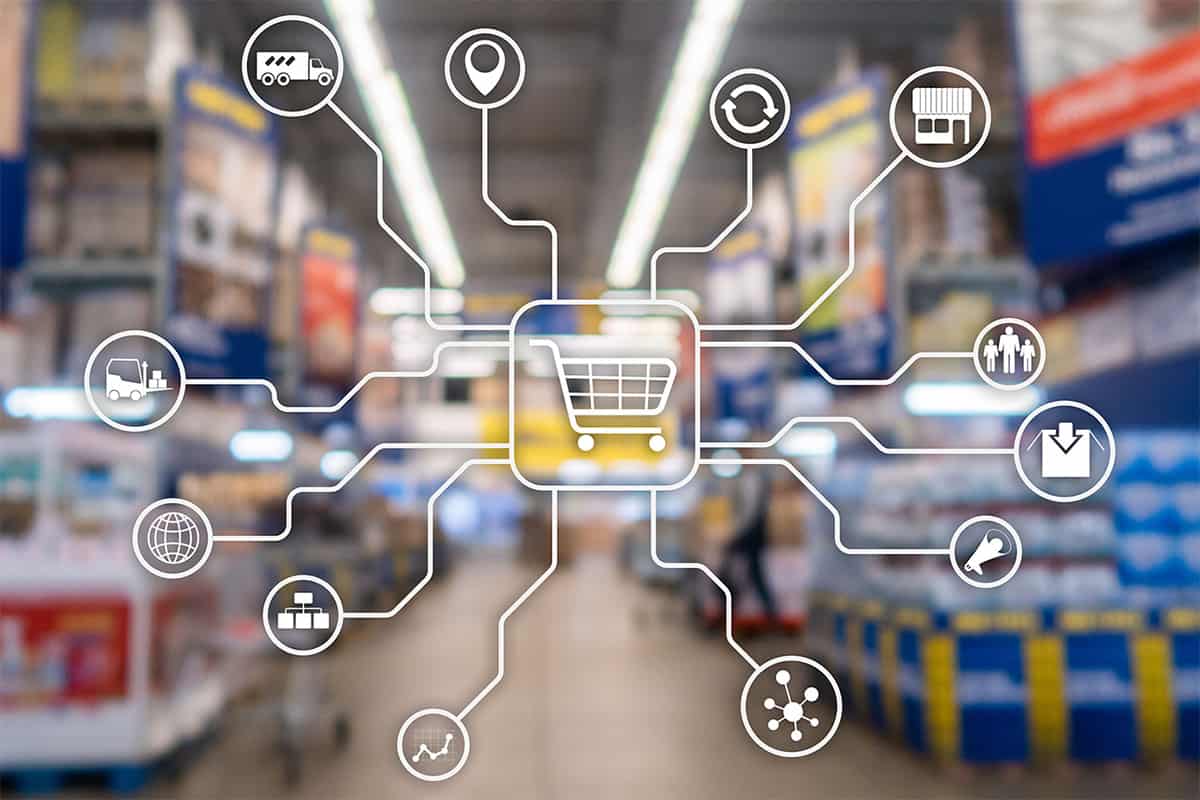Omnichannel retail has been implemented to varying degrees over the last seven or eight years. The concept really became viable with the advent of robust, easy-to-use mobile phones and tablets, which for in-store associates, were convenient gateways to successful clienteling and inventory management applications.
These devices helped expand the sales floor beyond the physical store, and enabled associates to sell products directly from the fulfillment center. Suddenly, stores were no longer “islands” of inventory exclusively sold through a POS system, and in-store sales were limited not by the number of products on the shelves, but by the number of products available within a retailer’s entire inventory ecosystem.
Essentially, omnichannel was a win-win for consumers and retailers alike.
Consumers had ready access to products, and retailers’ ability to sell products grew exponentially.
Building an Omnichannel Distribution Model
For today’s leading retailers, inventory is typically treated as both global and virtual in nature – open to almost any sales channel whether online, in-store, a call center, and/or a wholesaler. And retailers are looking to fulfill orders to these destinations from any number of points of origin: a warehouse, a mini-urban distribution center (DC), a proprietary store, a locker, a 3rd party store, and/or a drop-ship supplier.
But building this omnichannel fulfillment distribution model isn’t easy. Retailers have typically become “omnichannel capable” only through a drip feed of annual IT projects and revised business practices. And even when larger business process and IT landscape changes have been sent into motion, such as new mobile POS systems, order management solutions, or mobile and cloud native commerce platforms, customer processes and fulfillment operations tend to be adjusted year-on-year rather than end-to-end. This means retailers are missing opportunities to see whether processes can be fundamentally redesigned to optimize the customer experience and minimize the cost of increasingly complex supply chain processes (which are often executed with manual labor in several small fulfillment centers).
For example, retailers tend to overlook planning processes that are the foundation of best practice supply chain management. Assortment planning for online and in-store may remain disconnected, and in turn, demand planning for online and in-store remains disconnected. In this environment, retailers will have sub-optimal procurement, where purchase orders from different channels land in suppliers’ inboxes as though they’re from two different companies. Now, the retailer can’t optimize inbound delivery and inventory allocation, adding costs into the supply chain for both suppliers and retailers – a genuine lose/lose scenario.
Moving on [pun intended!] to last mile fulfillment, delivery from warehouse to consumer, from store to consumer, from store to store, and from warehouse to third party location for collection by consumer, all tend to suffer from a similar tactical impairment. The approach is almost always, “Gee, we need to bolt on shipping to the e-commerce, order management, or aging warehouse system. Go find one or have the IT program do a bespoke integration project with FedEx, etc., etc., etc.” While this may address the short-term problem, it misses so many opportunities that it almost causes our V.P. of Business Development (and the author of this post!) sympathy pains.
So, what sort of opportunities are being missed? Here are just a few examples:
Optimizing the customer experience. This is pretty fundamental. Very few companies allow their customer to select their preferred last mile delivery carrier. Modern multi-carrier systems can do this and still meet customer SLAs while controlling costs to meet internal profit objectives.
Childlike sourcing logic for ship from store and store collections. Most retailers use order management systems to make sourcing decisions, based on the customer’s postal code and inventory availability. But the OMS/e-commerce systems have no history of their stores’ and their carriers’ operation/execution competence.
They certainly don’t take this into account in the sourcing logic for fulfillment, and thereby the retailer increases the likelihood of creating a negative customer experience – allocating to stores that are poor at shipping or using carriers that are habitually late, for example.
Shipment order tracking. When a retailer simply provides the customer with a tracking URL from the carrier, the retailer can’t proactively alert customers of delivery events in advance. Instead, the retailer should build the technical infrastructure (cough, TMS for parcel shipping with a Control Tower, cough) that allows the retailer to capture – and act on – carrier status messages.
How can a retailer quickly make product re-available for sale during peak season?
Put the Right Omnichannel Fulfillment Strategy in Place
The list of perils that can befall a retailer when tackling omnichannel distribution with a short-term mindset are leaving plenty of lost opportunities on the table. But putting the right omnichannel retail strategy in place provides the direction many leading retailers need to successfully transition to a fulfillment approach that improves customer service and profitability.
Download our white paper: Omnichannel’s Missing Link, to learn more.







